Complete Solutions to Problems Based On Mixed Concepts of chapter WORK, ENERGY, POWER AND COLLISION of Class 11 book with complete answers and questions
| Class 11 | PHYSICS |
| Chapter | WORK, ENERGY, POWER AND COLLISION |
| A2Z | Problems Based On Mixed Concepts |
| Number Of Questions | 32 |
| Academic Year | 2023-24 |
A boy weighing `50 kg` finished long jump at a distance of `8 m`. Considering that he moved along a parabolic path and his angle of jumps was `45^(@)`, his initial `KE` will be `g = 9.8 m//s^(2)`
01:25View SolutionIf KE of a body increases by `300%`, by what `%` will the linear momentum of the body increase?
03:47View SolutionMomentum of a particle is increased by `50%`. By how much percentage kinetic energy of particle will increase?
04:22View SolutionTwo bodies of mass `1 kg and 2 kg` have equal momentum. The ratio of their kinetic energies is:
00:54View SolutionTwo bodies with masses `1 kg and 2 kg` have equal kinetic energies. If `p_(1) and P_(2)` are their repective momenta, then `p_(1)//P_(2)` is equal to :
00:55View SolutionA particle moves in the x-y plane under the action of a force `vecF` such that the value of its linear momentum `vecP` at any time t is `P_(x)=2cost` and `P_(y)=2sint`. What is the angle `theta` between `vecF` and P at a given time t?
05:45View SolutionA body moving with velocity `v` has momentum and kinetic energy mumerically equal. What is the value of `v`?
00:27View SolutionA light body `A` and a heavy `B` have equal linear momentum. Then the `KE` of the body `A` is
04:59View SolutionA block of mass `m` is pulled slowly by a minimum constant force `(F)` on a horizontal surface thorugh a distance x. The coefficient of kinetic friciton is `mu`. Find the work done by the force `(F)`.
 07:34View Solution
07:34View SolutionA body of mass `6kg` is under a force which causes displacement in it given by `S= (t^(2))/(4)` metres where `t` is time . The work done by the force in `2` sec is
01:38View SolutionThe displacement `x` of particle moving in one dimension, under the action of a constant force is related to the time `t` by the equation ` t = sqrt(x) +3`
where `x is in meters and t in seconds` . Find
(i) The displacement of the particle when its velocity is zero , and
(ii) The work done by the force in the first ` 6 seconds`.04:23View SolutionA partical is realeased from the top of two inclined rought surface of height `h` each. The angle of inclination of the two planes are `30^(@)` and `60^(@)` respectively. All other factors (e.g. coefficient of friction , mass of the block etc) are same in both the cases. Let `K_(1) and K_(2)` be the kinetic energy of the partical at the bottom of the plane in two cases. Then
04:02View SolutionVelocity-time graph of a particle of mass (2 kg) moving in a straight line is as shown in Fig. Find the work done by all the forces acting on the particle.
 . 01:45View Solution
. 01:45View SolutionA `15 gm` ball is shot from a spring whose spring has a force constant of `600 N//m`. The spring is compressed by `5 cm`. The greater possible horizontal range of the ball for this compression is
02:28View SolutionSystem shown in figure is released from rest . Pulley and spring is massless and friction is absent everywhere. The speed of `5 kg` block when `2 kg` block leaves the contact with ground is (force constant of spring `k = 40 N//m and g = 10 m//s^(2))`
 05:06View Solution
05:06View SolutionA partical of mass `m` is projected with velocity `u` at an angle `alpha` with horizontal. During the period when the partical desconds from highest point to the position where
its velocity vector makes an angle `(alpha)/(2)` with horizontal. Wiork done by gravity force is01:39View SolutionA varible force `P` is amintained targent to a frictionless cylinder surface of radius a as shown in the figure. By slowly varying this force, a block of weight `W` is moved and the spring to which it is streched from position `1` to position `2`. The work done by the force `P` is:
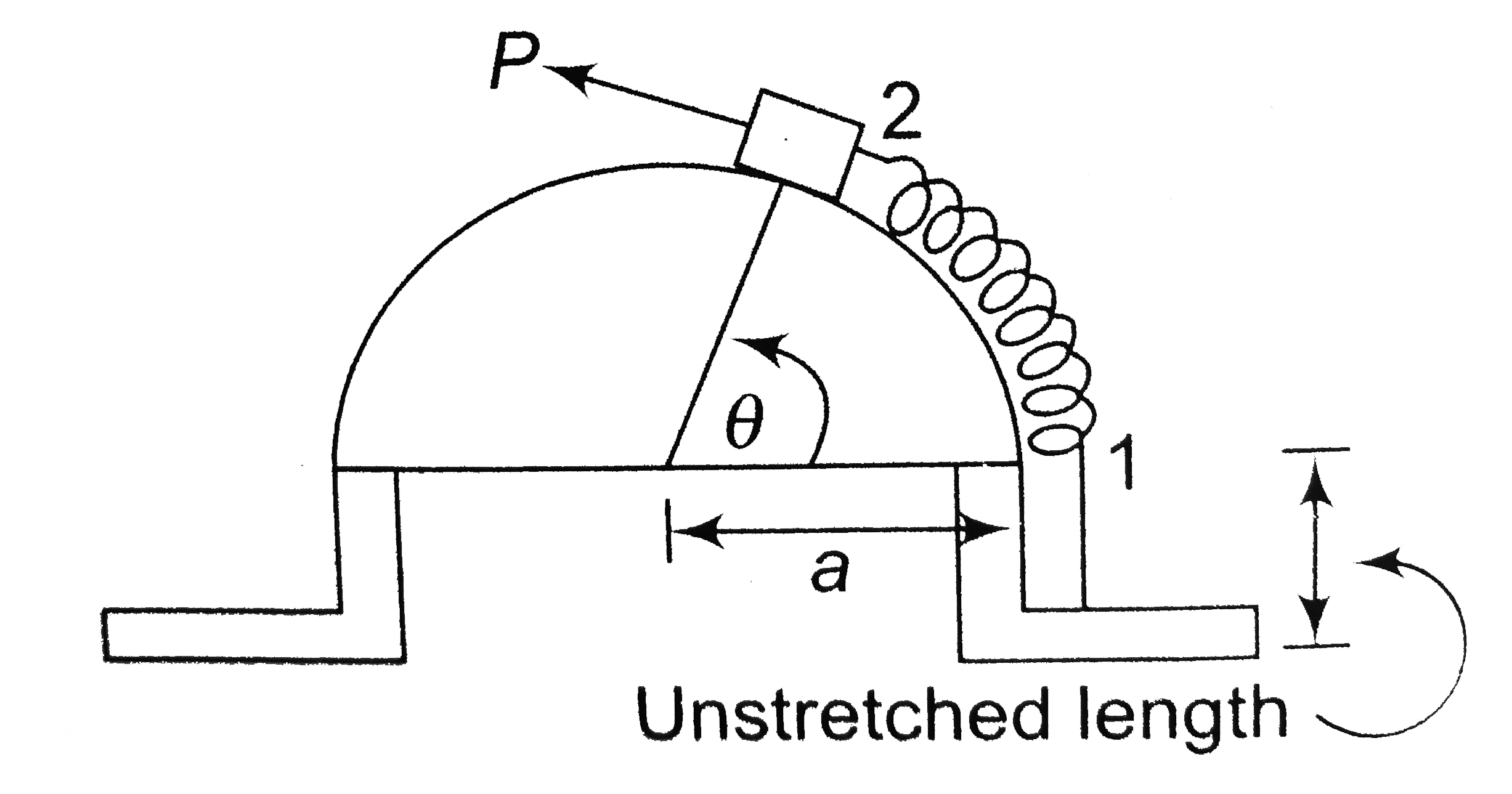 01:40View Solution
01:40View SolutionIn the figure shown, the system is released frrom rest. Find the velocity of block `A` when block `B` has fallen a distance `l`. Assume all pulleys to be massless and frictionless.
 04:41View Solution
04:41View SolutionA ball falls undal gravity from a height of 10m with an initial downward velocity u. It collides with ground, loses halft its energy and then rises back to the same height. Find the initial velocity u.
03:54View SolutionThe kinetic energy of partical moving along a circule of radius `R` depends upon the distance covered `S` and given by `K = aS` where `a` is a constant. The the force acting on the partical is
00:55View SolutionThe kinetic energy of a body moving along a straight line varies with time as shown in figure. The force acting on the body:
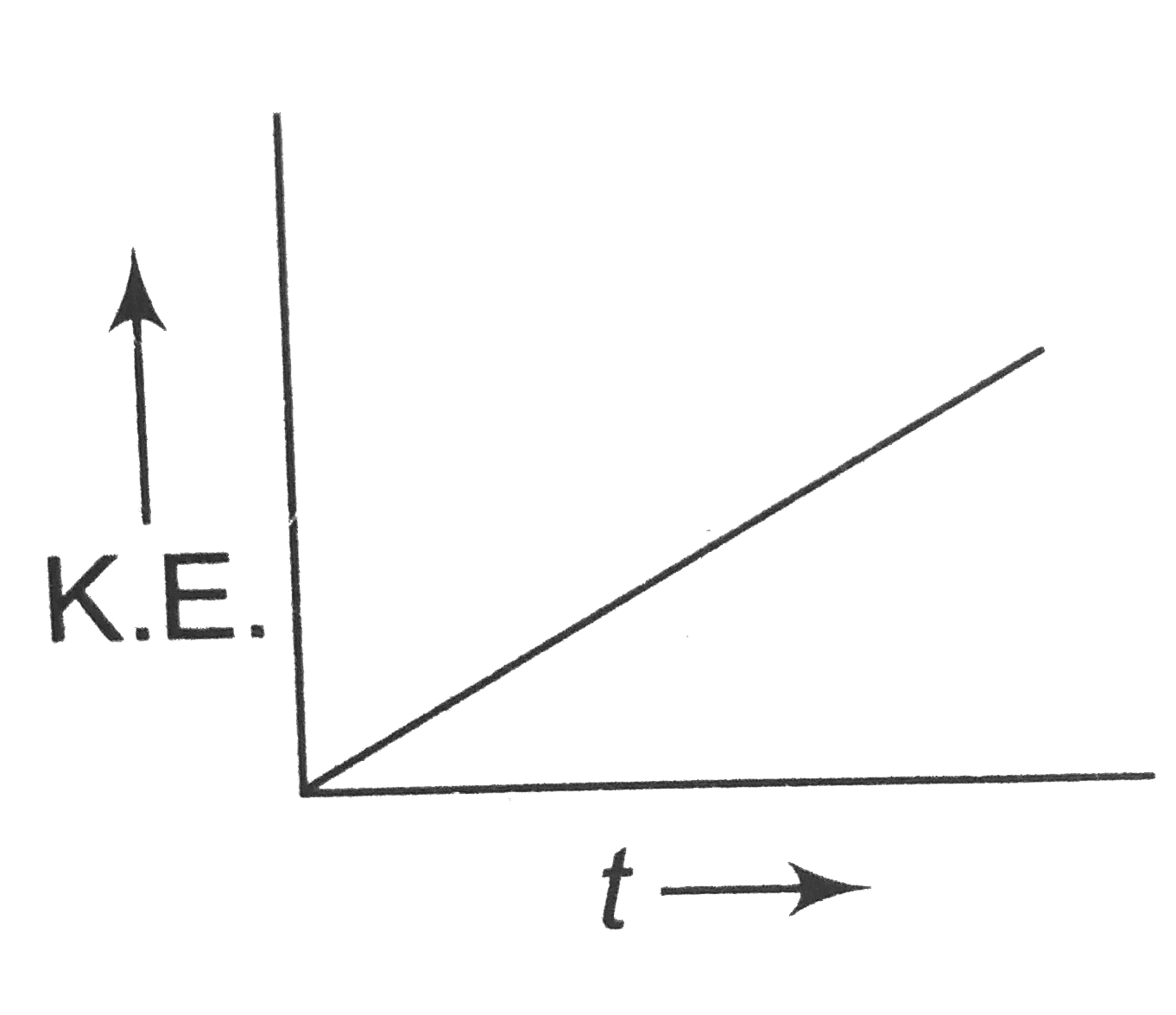 04:07View Solution
04:07View SolutionIn the figure shown, there is a smooth tube of radius `R`, fixed in the vertical plane. A ball `B` of mass `m` is released from the top of the tube. `B` slides down due to gravity and compresses the spring is fixed and end `A` is free., Initially, line `OA` makes an angle `60^@` with `OC` and finally it makes an angle of `30^@` after compression. Find the spring constant of the spring.
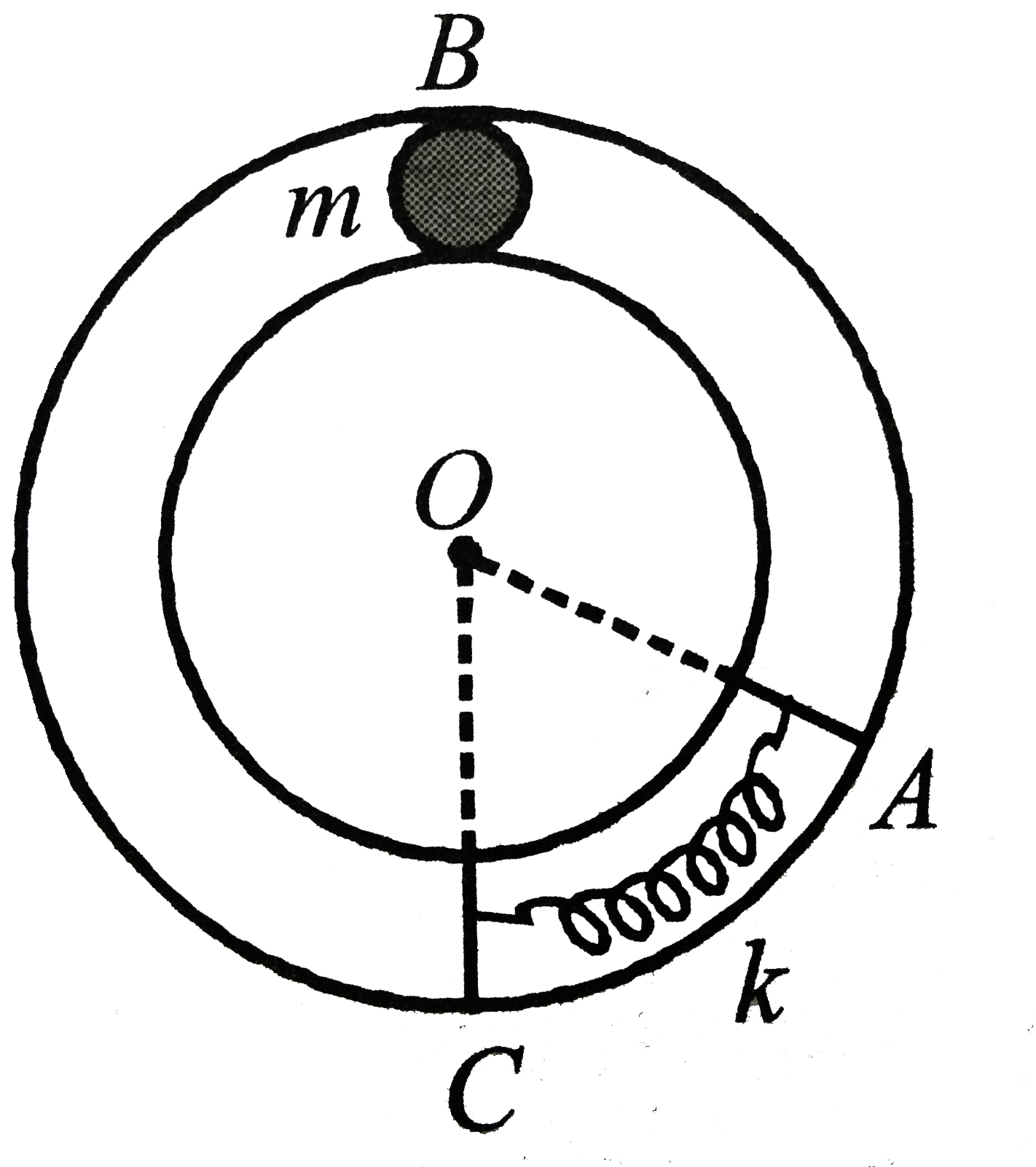 03:40View Solution
03:40View SolutionA block mass `m = 2 kg` is moving with velocity`v_(0)` towards a massless unstretched spring of the force constant `k = 10 N//m`. Coefficient of friction between the block and the ground is `mu = 0.2`. Find the maximum value of `v_(0)` so that after pressing the spring the block does not return back but stops there permanently.
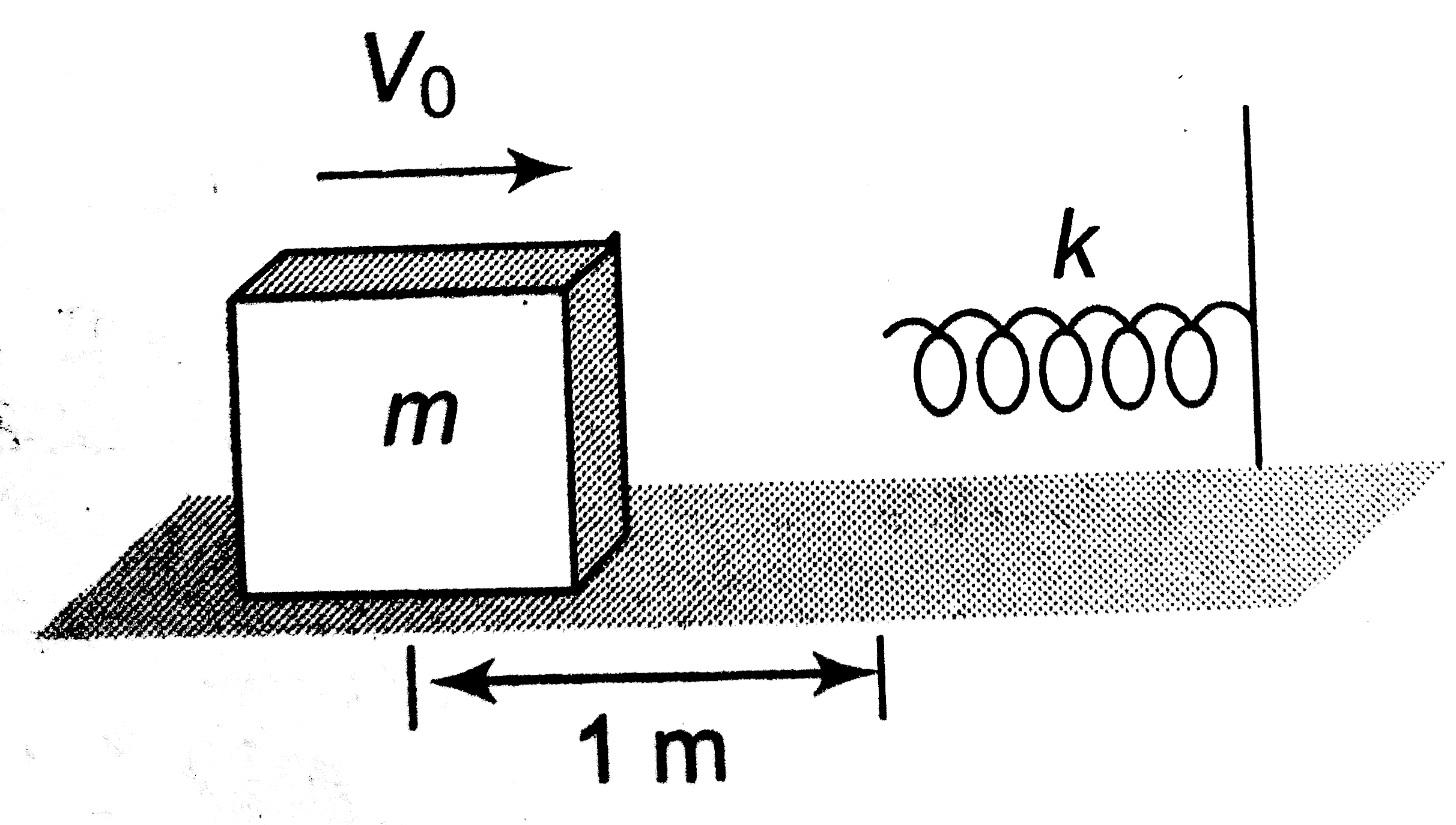 02:49View Solution
02:49View SolutionIn figure a force of magnitude `F` acts on the free end of the card. If the weight is move up alowly by a distance b. How much work is done on the weight by the rope connecting pulley and weight?
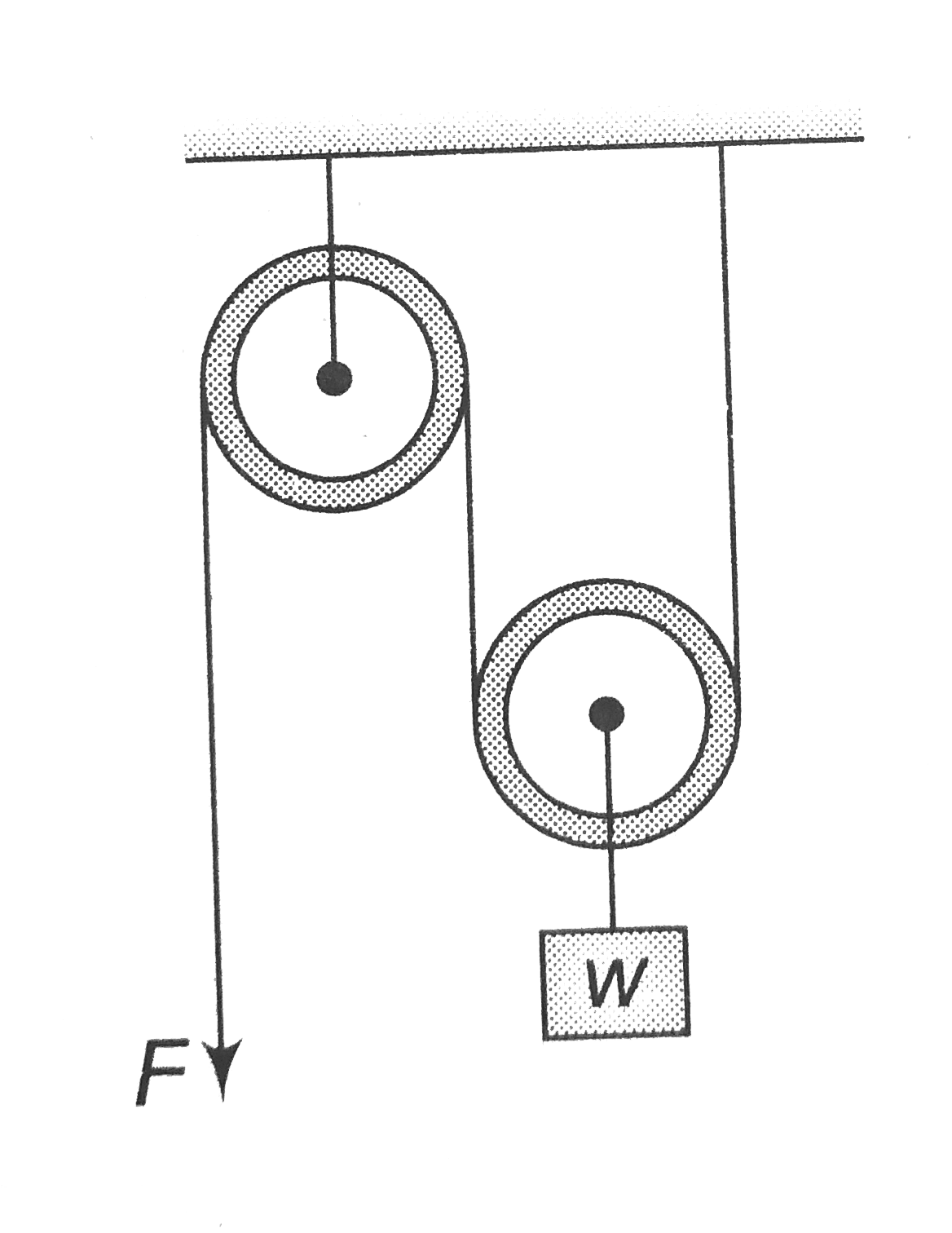 00:56View Solution
00:56View SolutionThe system shown in the figure consider of a light , inextenslible cord, light, frictionless pulley, and blocks of equal mass. Notice that block `B` is attached to one of the pulleys. The system is initial held at rest so that the ground . The blocks are then released. Find the speed of block `A` at the moment the vertical separation of the blocks is `h`.
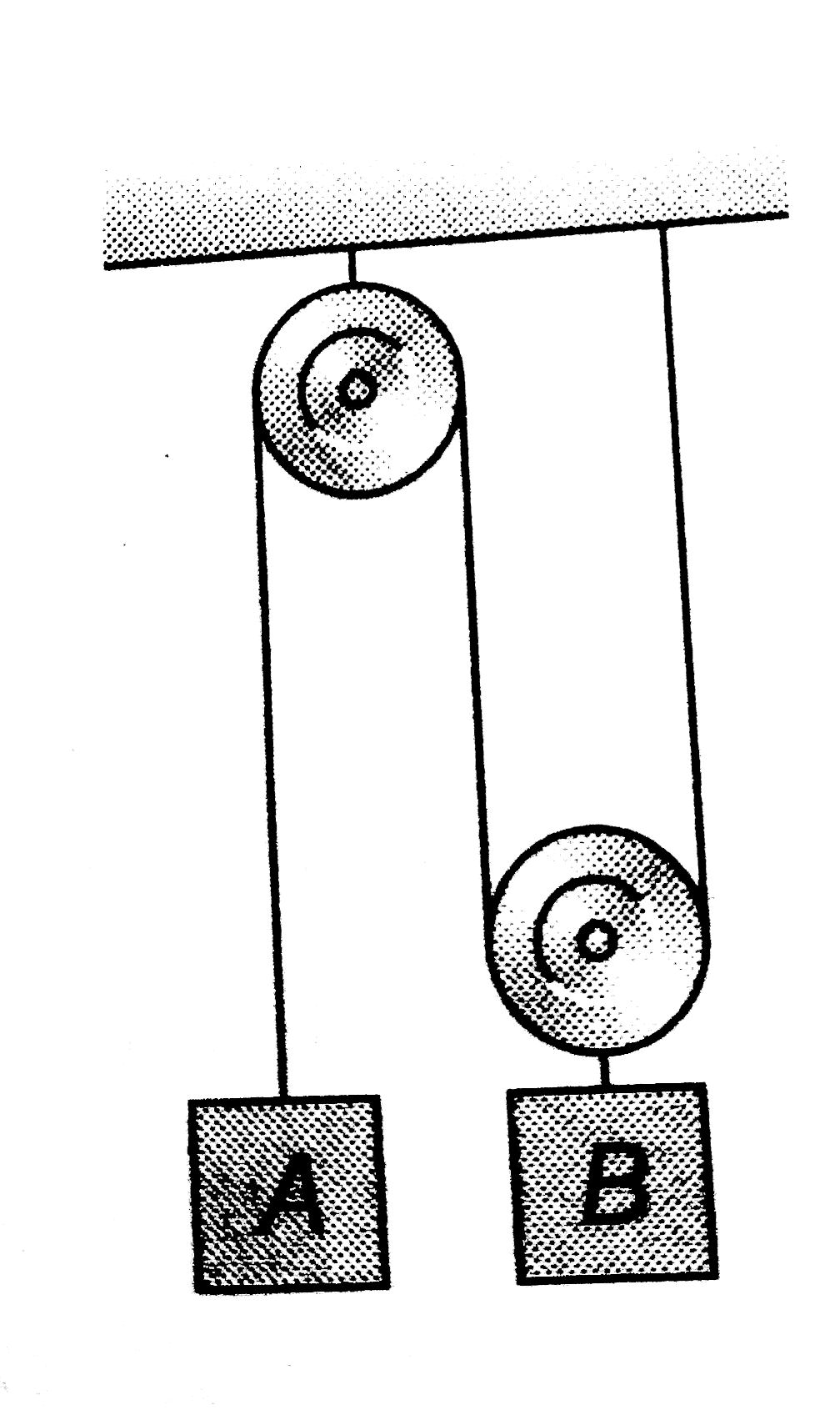 03:07View Solution
03:07View SolutionWhile running a person transforms about `0.60 J` chemical energy to mechanical energy per stop per kilogram of body mass. If a `60 kg` runner transform energy at a rate of `72 W` during a race, how fast is the person running? Assume that a running step is `1.5m` long
01:32View SolutionA simple pendulum of length hangs from a horizontal roof as shown in figure. The bob of mass `m` is given an initial horizontal velocity of magnitude `sqrt(5 gl)` as shown in figure. The coefficient of restitution `e = (1)/(2)`. After how many collisions the bob shall no long come into constant with the horizonrtal roof?
 01:08View Solution
01:08View SolutionA mass of `2.9 kg` is suspended from a string of length `50 cm` and is at rest . Another body of mass `100 gm` which is moving horizontal with a velocity of `150 m//s` strikes it . After striking the two bodies combine together . Tension in the string , when it is at an angle of `60^(@)` with the velocity is : `g = 10 m//s^(2)`
06:14View SolutionThe given figure shows a small mass connected to a string which is atteched to a string , which is attached to a vertical post. If the mass is released from rest when the string is horizontal as shown the magnitude of the total acceleration of the mass as friction of the angle `theta` is
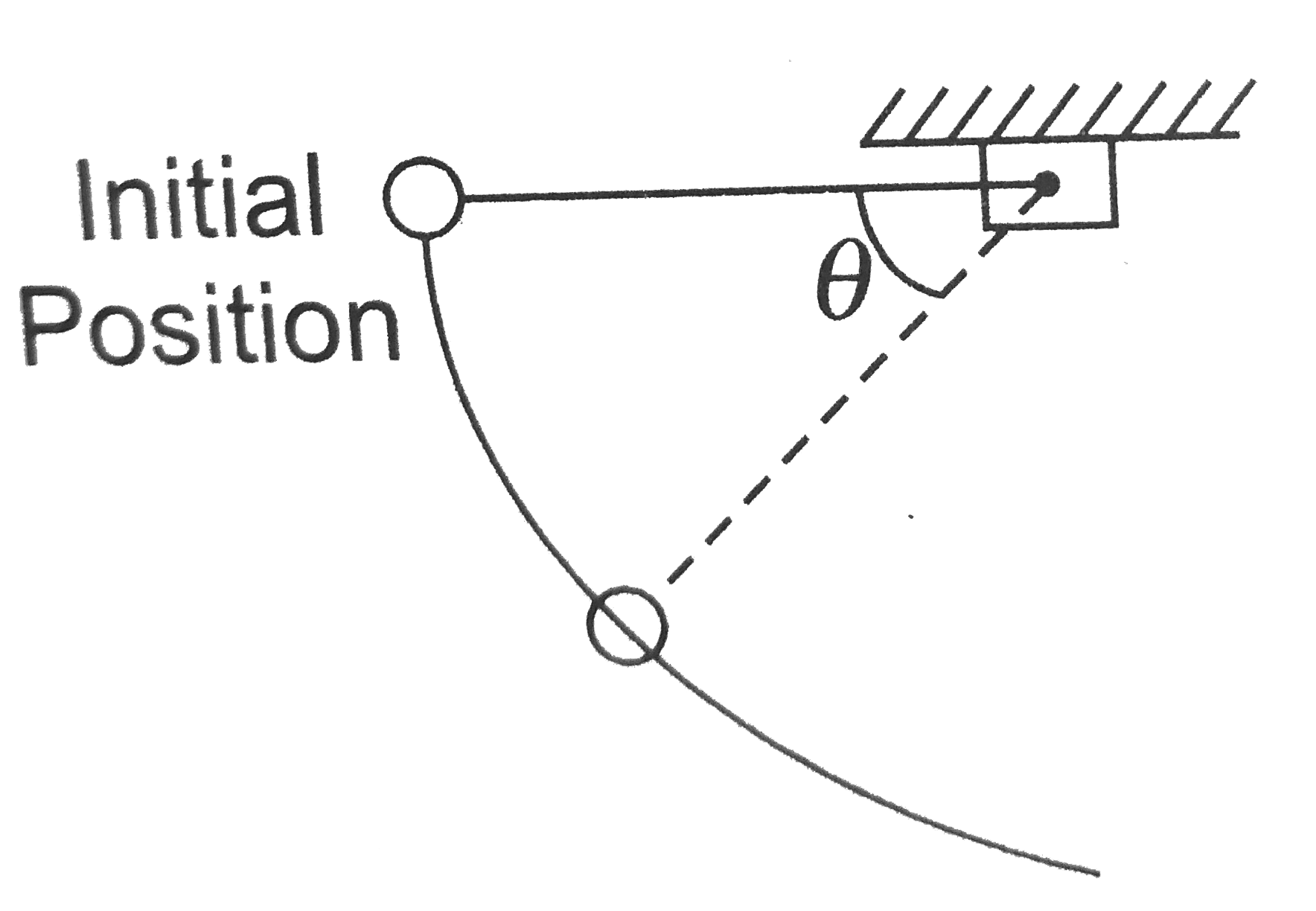 02:21View Solution
02:21View SolutionA pendulum comprising a light string of length `L` and small sphere, swings in the vertical plane . The string hits a peg located a distance of bellow the point of suspension (figure). If the pendulum is released from rest at the horizontal possition `(theta = 90^(@))` and is to swing in a complete circle centered on the peg, the minimum value of `d` is
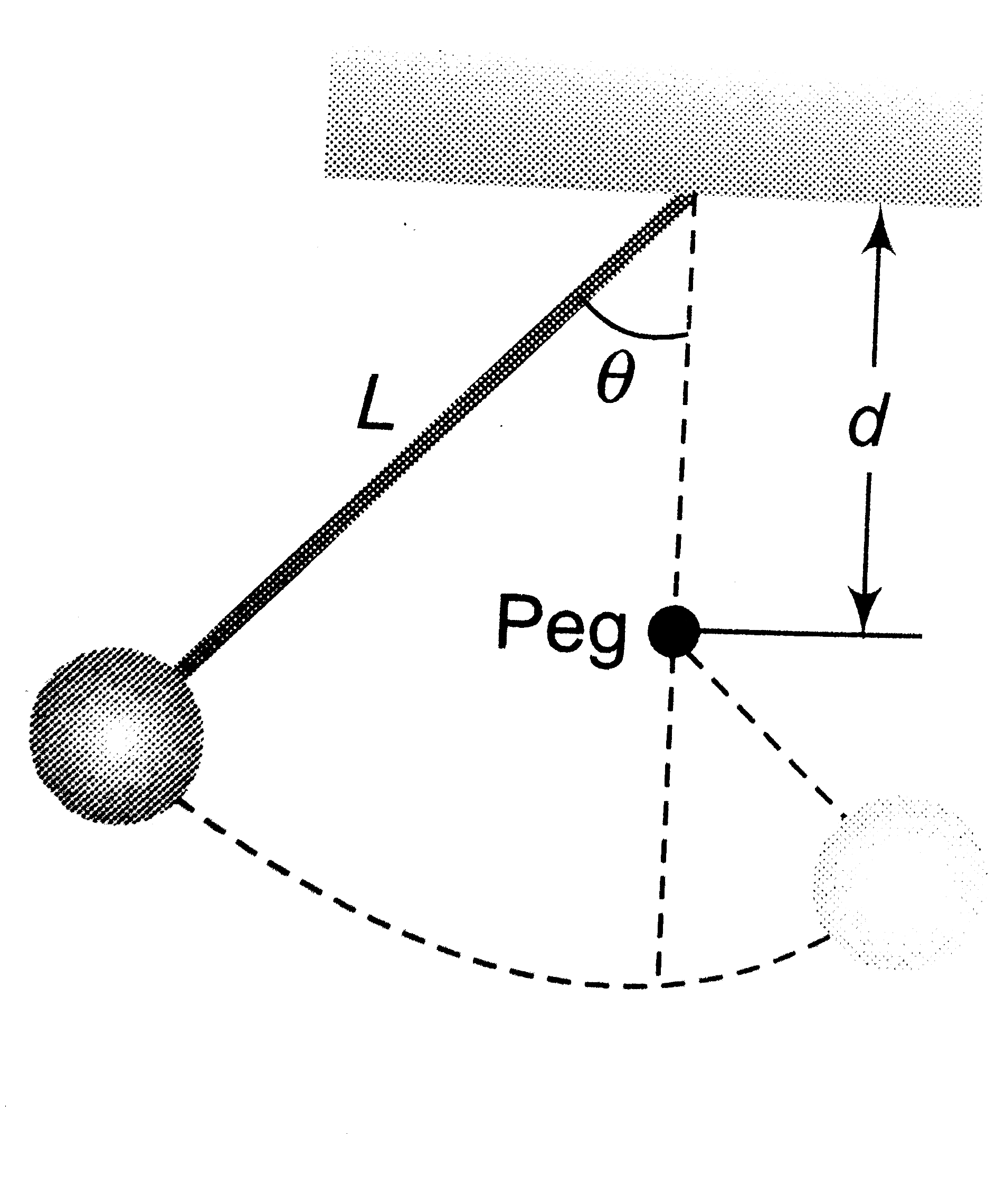 02:11View Solution
02:11View SolutionIn the track shown in figure section `AB` is a quandrant of a circle of `1` metre redius. A block is released at `A` and slides without friction until it reaches `B`. After B it moves on a rought horizontal floor and comes to rest at distance `3` meters from B. What is the coefficient of friction between floor and body?
 01:50View Solution
01:50View SolutionIn the figure shown initial spring is in unstretched state and blocks are at rest. Now `100 N` force is applied on block `A and B` as shown in figure. After same time velocity of 'a' becomes `2 m//s` and that of 'B' `4 m//s` and block A displaced by amount `10 cm` and spring is spring is streched by amount `30 cm`. Then work done by spring force on `A` will be:
 02:19View Solution
02:19View Solution
Problems Based On Mixed Concepts questions and complete solutions for chapter WORK, ENERGY, POWER AND COLLISION of A2Z PHYSICS (HINGLISH) of Class 11
All Exercises from A2Z Class 11 PHYSICS WORK, ENERGY, POWER AND COLLISION
- AIIMS Questions
- Assertion Reasoning
- Chapter Test
- Circular Motion In Vertical Plane
- Collision
- Concept Of Work Done
- Conservation Of Mechanical Energy And Linear Momentum
- Mechanical Power
- NEET Questions
- Potential Energy, Conservative And Non-Conservative Forces
- Problems Based On Mixed Concepts
- Work-Energy Theorem
